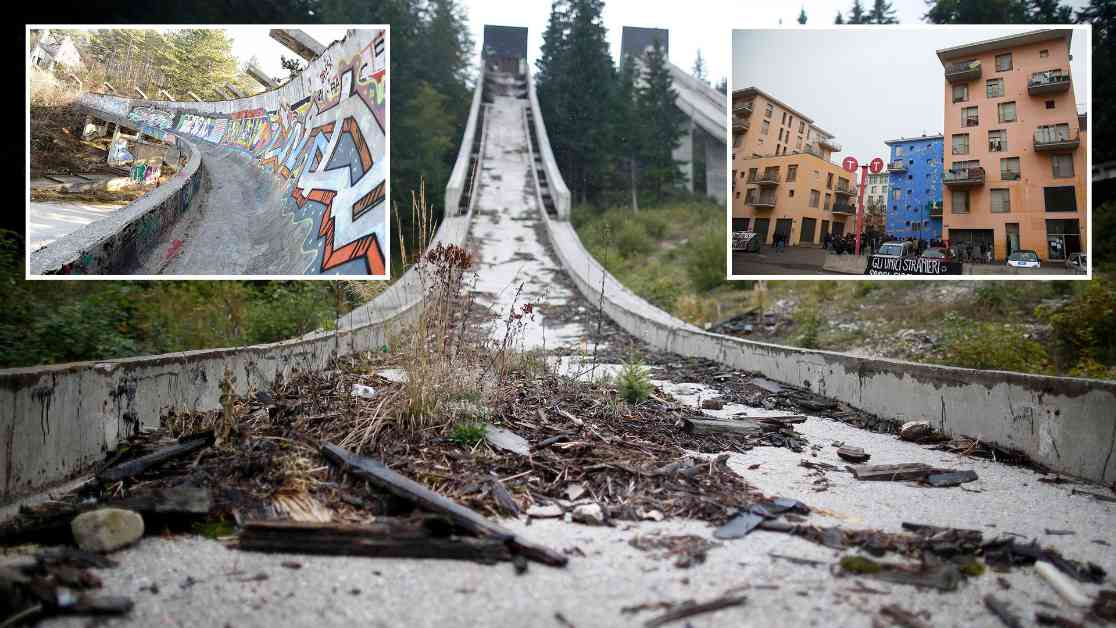The Olympics are a costly affair for any country to take on. It is believed that London 2012 incurred costs that ran up to £9 billion, which is three times the original budget of £2.4 billion. The money is often spent on building new facilities, improving current stadia, and in some cases, building infrastructure like motorways and roads in the city, as was the case with Beijing 2008.
However, once the show is over, what gets left behind often becomes a sorry sight. The abandoned Olympic venues from past Winter and Summer Games serve as a stark reminder of this. From Berlin 1936 to Sarajevo 1984 and Turin 2006, the derelict ruins of these once-glorious venues are a haunting sight.
In Sarajevo, the venues from the 1984 Winter Games were destroyed during the Bosnian War and never rebuilt. A disused ski jump, Olympic accommodation, and a hotel were all left in ruins. The ski jump venue now lies in ruins, covered in graffiti, serving as a stark reminder of the Bosnian War.
Turin, host of the 2006 Winter Games, saw its Olympic village transformed into a refugee camp, housing over 1,000 migrants at one point. The living conditions became extremely poor, showing the stark contrast between the glamour of the Games and the reality that follows.
Berlin 1936, under Nazi rule at the time, has left abandoned sports venues that were later used as barracks for soldiers. The swimming pools and other areas of the Olympic village have been left to rot, serving as a reminder of a dark period in history.
Beijing 2008, a memorable Games that cost £32 billion, has seen its once-thriving venues left in tatters. The beach stadium built for volleyball now lies deserted, while the kayaking course has been left in a mess. The fallen mascot buried beneath the trees is a poignant reminder of the Games that once took place there.
The saddest legacy remains in Atlanta 1996, where the Herndon Stadium, once packed with fans, now lies deserted and covered in graffiti. The economic frailties post-Olympics in Athens 2004 led to further investment stalling, resulting in rotting venues and neglected infrastructure.
While some venues, like the ski jump in Cortina d’Ampezzo from 1956, have aged well, others like the Aquatics stadium in Rio de Janeiro from 2016 have been left in ruins. The Aquatics stadium, once a bustling venue, now sits abandoned, exposing risks of diseases like zika and dengue.
The abandoned Olympic venues serve as a cautionary tale for future host cities. The glamour of the Games is often short-lived, and what remains once the festivities are over can be a stark reminder of the costs and consequences of hosting such a grand event.

